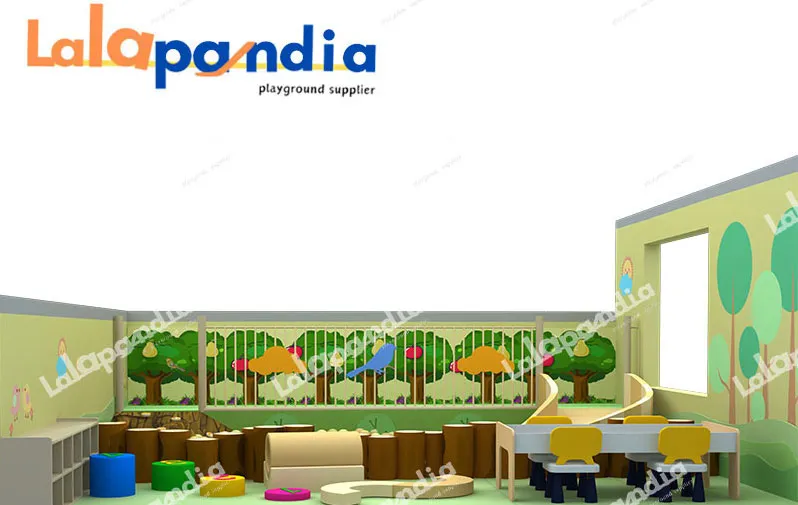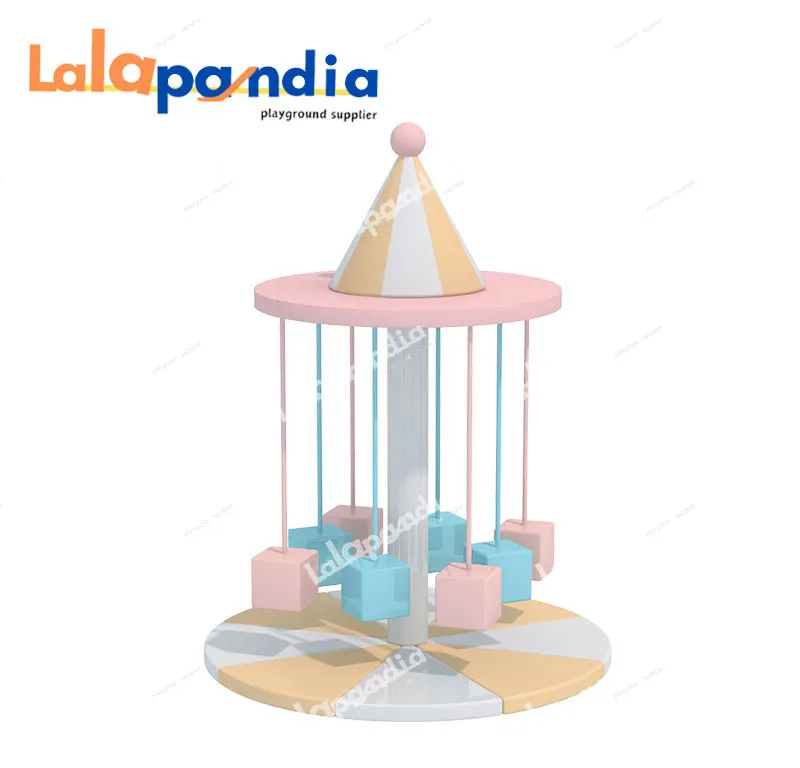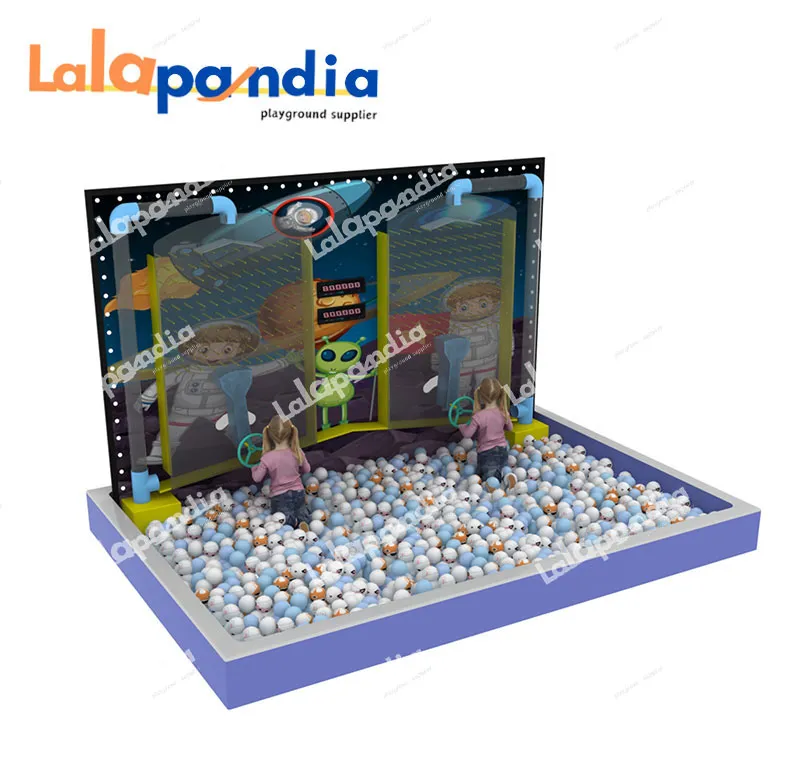2025.08.28
Posted By: Peter
Soft play equipment has become a staple in spaces catering to young children, offering a safe and engaging environment for play. Whether you're a parent looking to create a fun corner at home or a business owner aiming to attract families, this comprehensive guide will walk you through everything you need to know about buying soft play equipment.
Soft play equipment refers to a range of play structures and items specifically designed for young children, typically aged 0-6 years old. These products are made from soft, cushioned materials such as foam, vinyl, and fabric to minimize the risk of injuries during play. The core purpose of soft play equipment is to provide a secure space where children can explore, climb, crawl, and interact while developing their physical, cognitive, and social skills. Unlike traditional play equipment, which may be made of hard materials like metal or wood, soft play equipment prioritizes safety without compromising on fun and engagement.
| Feature | Soft Play Equipment | Indoor Playground Equipment |
|---|---|---|
| Target Age | Primarily for infants and preschoolers, from 6 months to 6 years old. | Caters to a wider age range, including older children (up to 12 years) and teenagers. |
| Materials | Constructed almost entirely from soft materials (foam, soft padding). | Often combines soft materials with hard components like plastic slides, metal frames, rope nets, and climbing walls. |
| Activity Type | Focuses on low-level, foundational skill development: crawling, climbing, sliding, sensory exploration. | Offers more challenging activities: tall slides, zip lines, large climbing structures, trampolines, interactive games. |
| Safety Standards | Extremely high safety standards, emphasizing impact and fall protection. | Safety standards are also high, but the nature of the activities involves different risk types, requiring more vigilant supervision. |
Soft play comes in many forms, categorized by function and interactivity.
This is the most classic form of soft play, designed specifically for young children. It is often modular and can be configured to fit any space.
Examples: Padded crawl stairs, mini slides, wavy bridges, crawl-through tunnels, and shaped soft blocks. These structures are brightly colored to stimulate sensory development and encourage essential motor skills.

This category integrates gentle motorized elements to add dynamic movement and interactivity.
Examples: Electric rotating items (like a slowly turning cake or car) or interactive projection floors (where children can step on projections that light up or create effects). Electric equipment is highly engaging and can increase play duration, but it also comes with higher costs and maintenance requirements.

The ball pit is an iconic centerpiece of any soft play area. It is not only a source of fun but also crucial for development.
Benefits: Provides tactile sensory stimulation and helps children learn spatial awareness, colors, and counting. Jumping into a ball pit is also a great exercise for coordination and courage. Design: Can be free-standing or connected to other soft play structures, like the exit of a slide.

1. Physical Development: Promotes gross motor skills (crawling, walking, climbing, balancing) and fine motor skills (grasping, stacking).
2. Cognitive Development: Stimulates the senses through exploration of shapes, colors, and textures, while encouraging problem-solving and spatial awareness.
3. Social & Emotional Development: Learn to take turns, share, and interact with other children in a shared space, building confidence and independence.
4. Safety: Provides an environment where toddlers can freely explore and test their limits without parents worrying about serious injury.
1. Attracts Target Customers: For family-oriented businesses, a high-quality soft play area is a powerful magnet that draws parents with young children.
2. Increases Dwell Time and Revenue: Happy children mean parents stay longer, leading to increased spending on food, beverages, or other services.
3. Enhances Brand Image: Investing in child-friendly facilities shows that a business cares about its family clients, significantly improving customer loyalty and positive word-of-mouth.
4. Creates an Additional Revenue Stream: Can be used as a paid admission play area or as the centerpiece of children's party packages, generating direct income.
Any business whose clientele includes families with young children can benefit:
Restaurants & Cafés: Particularly family restaurants, diners, and eateries within shopping malls.
Early Learning Centers & Preschools: An essential facility for teaching and activities.
Shopping Malls & Retail Stores: Provides a break for parents shopping with children, drastically improving the customer experience.
Hotels & Resorts: A value-added amenity for family rooms, attracting tourists with children.
Gyms & Fitness Centers: Offers a childcare solution, allowing parents to work out uninterrupted.
Dedicated Indoor Play Centers: The core business, operating on a pay-for-entry model.
Investing in soft play equipment is a decision with long-term value for both homes and businesses. For families, it means creating a safe, fun, and educational environment for a child's development. For businesses, it is a powerful commercial tool to attract customers, increase revenue, and build a positive brand image.
The key to success lies in defining your goal (personal or commercial use), understanding your target users (age and ability), and choosing equipment that meets the highest safety standards, is well-designed, and is easy to maintain. With careful planning and selection, soft play equipment will be a source of countless hours of joy and learning.
Q1: How safe is soft play equipment?
A: High-quality soft play equipment adheres to strict international safety standards (e.g., EU's EN 1176, ASTM F1918 in the U.S.). Ensure you purchase from a reputable supplier that uses fire-resistant, non-toxic materials and guarantees all structures are secure. Regular maintenance and cleaning are also vital for ongoing safety.
Q2: What is the difference between commercial-grade and home-grade soft play?
A: Commercial-grade equipment is built for high-traffic use. It features more durable, heavy-duty, and easily cleanable materials, sturdier construction, and must comply with stricter public safety regulations. Home-grade equipment prioritizes compact size and affordability.
Q3: Is it difficult to maintain and clean?
A: Daily cleaning is straightforward, usually requiring a soft cloth and a mild disinfectant to wipe down the vinyl surfaces. Deep cleaning may involve removing and washing covers (if the design allows). Equipment should be regularly inspected for signs of wear and tear.
GET A QUOTE